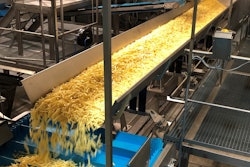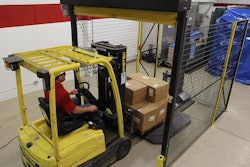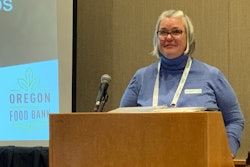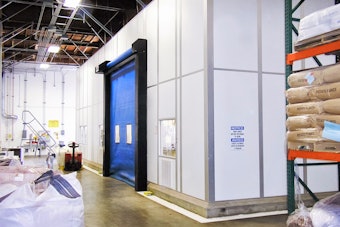
Automated inventory management solutions are used for a variety of different products, including medications and equipment. Their popularity continues to grow in tracking drugs for efficiency benefits across health systems.
We talked with Eric Schaefer, PharmD, manager of pharmacy operations at Allegheny Health Network, about how using label systems from Kit Check and CCL Healthcare has opened doors, increased efficiency, and more.
This is part 2 of a two-part series. For an explanation of the RFID inlay technology, implementation details, and more, visit Part 1 here.
HCP: What is the RFID implementation process like for automated drug tracking at a health system or hospital?
Eric Schaefer: I was involved at my previous practice site with full implementation of trays in 45 ORs. That was around 120 anesthesia trays. I also redid our process for OR nursing kits as well as expanding it for medication safety and other uses. By the time I left my last facility which was about a 700-bed facility, we were using about a thousand tags a day. And we were still advancing.
I think the implementation process is very user-friendly and simple, regardless of the option you choose. With Kit Check, in the implementation phase they'll provide you with an assessment of your tray set up.
The challenge when you first implement is you don't have analytics yet for what your turns are or how many you're using. That's one of the beautiful things that you eventually get later down the road. In the initial setup, if you don't have the data, you might tag 180 or 200% of the stock in the trays, because then you would have enough to put into trays and then also have inventory.
Some places will stagger and convert trays as they come back to be stocked. Others will do them all at once—pulling trays and changing them out for an RFID-tagged tray.
That's the process I went with because I didn't want there to be a tray sitting there, especially in an OR that wasn't used as frequently, and then two to five days after implementation this tray shows up and it needs complete conversion.
HCP: What new hardware or scanners need to be installed or implemented?
ES: Every experience that I had with Kit Check was very responsive in getting that product onsite and up and running. It's very easy because of the limited connections that you have to make with it being a box going through a scanner, going directly to ethernet and you connecting to a web-based program rather than having a computer that's connected to the actual device.
HCP: Let’s talk KPIs and metrics. Should an ongoing monitoring system be established for continued improvement? How do you take action based on the data?
ES: There's a few different areas where you could look at this.
Overstocking kits: When we are developing out these kits and trays, the stock inside that tray is going to be based off of what the end user—the anesthesiologists or nurses—had experienced. They may have had a case where they once needed 10 vials, so there’s a sense that they needed 10 in this tray.

At first, I didn’t have any data to show necessarily that that's incorrect. But as time went on scanning that tray, it got to the point where I had emergency medications that totaled about $200 to $300 per tray times 120 trays. Everybody insisted that they needed those 10 vials. Over six or seven months, I was able to show data that that was only used maybe one or two times out of thousands of tray expenses.
So I was able to actually show that the vast majority of the time, they don't need these medications and pull some extra out of that tray. We adjusted stock with the idea that this is a fairly expensive medication and 90% of the time, they only use two in a case. You can work with the providers to start to decrease the stock that's in there and then it also allows you to work with them to place another item that they want. Space is limited. You can start to pick and choose what really is important to have in there and the right quantity, and save money in the carrying cost of that drug and in your pharmacy stock.
I found times where there was an emergency kit—they used it one out of a thousand times. I had thousands and thousands of dollars’ worth of inventory sitting there that, at that usage, would have been five years’ worth of stock. The drugs would sit there until they expire. We were able to make adjustments.
Inventory reporting: I can see the inventory in a given area and see what the average uses are. I can start to decrease inventory amounts in the actual bins themselves. And then when I have to do a physical inventory each year or twice a year, I can just pull the report because they're scanning these bins more frequently than doing a visual inspection of every vial. So it's seconds and it’s more accurate than a manual check.
Ordering: Also when you look at cost savings, if you don’t have the ability to scan bins, then it’s going to be a staff member looking in a bin and thinking it looks empty and ordering more. But if it’s something you don't use a ton of, perhaps you don’t need to order until you're down to one or two.
If you don't have the data to support that, people are just going to order what they want. So I've seen inventory reductions and reallocation since implementing.
Staffing: As I mentioned, I don't look at saving time in terms of eliminating staff hours but to reallocate that time to more meaningful activities. But a lot of places are still driven off of volume for their staffing models. For ORs in my facility, I never had data to show the number of items we were dispensing. Once I had Kit Check implemented, I was able to show the volume of tags and I was able to relate that to the staffing algorithm they had to prove that the staff that I had was adequate.
Using items close to expiry: You can locate drugs close to expiration, pull them from that tray, and then utilize them in your IV room instead of wasting them. That’s very difficult to do if you have to physically look at every vial or physically scan every vial, it's just too cumbersome to actually do that.
HCP: What would you say to someone who is just starting out in the process of using RFID tagging for automated inventory management?
ES: It's really important to look at the opportunities, knowing what it can do upfront as you're starting to develop all of these workflows. Try to see past what information you have today. If you have an understanding of what the capabilities are, you can integrate items such as the bin scanning in the workflow early on. That way it’s “one change” versus adding on what appear to be additional tasks in employees’ eyes later on.
Be patient in data collection and eventually you’ll see areas for changes or stock reduction. Looking at what data is available, it's amazing what you can end up using it for, including tracking employee/staffing levels.
Think through as you're developing out these processes and really have a champion to lead the effort, and have someone there representing technicians to really sell the "why" that you’re doing this. Also consider standardizing across sites or departments. You don't want every site to go through the same struggles and develop out multiple plans.
Look at your messaging. Saying it is to “reallocate time to other duties” is a better way of saying “save time,” because that's going to mean something to that tech or that pharmacist—they see meaning in it rather than just the hospital saving time.
In our case, I explained the why, and I had people on staff say, “I want to create a kit for this” or for that. It ended up leading to a feeling across the board where people were thinking outside the box about what we could manage through Kit Check and find time savings. It created an empowered culture.
I get extremely excited about Kit Check—I think RFID technology in general is going to change the world of inventory management and dispensing.
HCP: How might this technology benefit health systems in light of COVID-19 and the desire to reduce exposure?
ES: It's a good point. Even in the aspect of non-COVID-19 times, there are places such as surgery centers that don't have a pharmacy on-site. I can fill their trays at my hospital and I courier them over, and then they just send back the used trays for refilling.
Pre-COVID-19, people were looking at how to centralize tray processing. Now instead of requiring a pharmacist and technician on-site, it’s just the center’s technician changing out the tray. We use courier services daily, so why not courier a completed tray or completed kit?
If I have a facility that decreases staff because of COVID-19, I can process and build those trays and then send them over. If things shut down, with Kit Check being cloud-based, I can remotely look at a tray configuration without rebuilding the entire tray in my system. Staff can be moved to positions where they will do the greatest good.
At a smaller facility, they may have only a few staff and now they don't have to maintain that inventory. They don't necessarily have to have the scanner there, so it's something where I think even outside of COVID-19, we're going to see more of a system approach, as people try to conserve resources and reallocate expiring medication to places with higher usage rates.
Maybe Hospital A needs a significant amount of one medication and Hospital C does not use much. When those trays come back, I could start to move some of that and talk to those providers at Hospital C about decreasing… and I have data to support this.
I can also track a cart’s location (or lock if it has one) remotely, which is helpful if a site had to decrease on-site staff due to COVID-19.
Additionally, for the trays that come back, there is functionality to document the cleaning of a tray so that can be monitored. I would be able to see that this tray hasn't been cleaned in two days, then I can prompt it to be cleaned. You can even then use that data to show attempts to improve infection prevention.


















